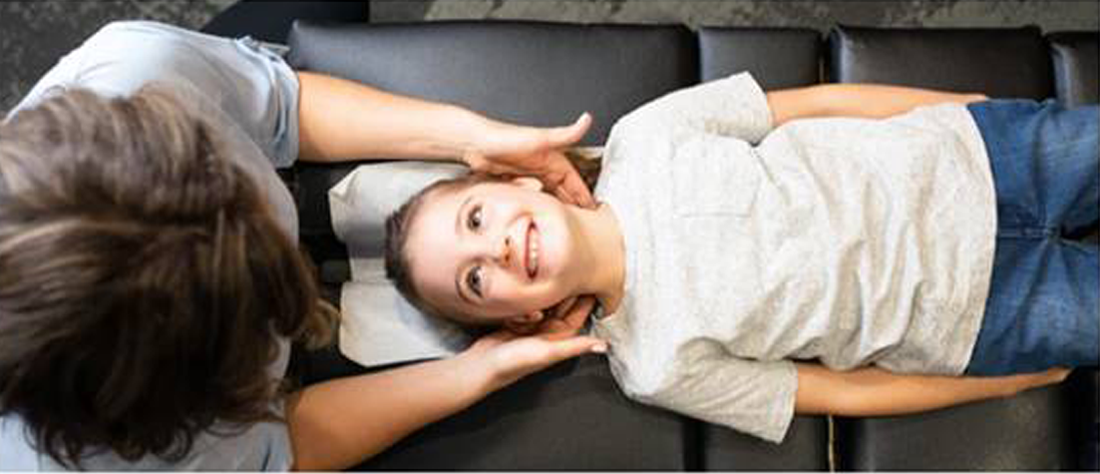A Randomized Controlled Trial Comparing A Multimodal Intervention and Standard Obstetrics Care For Low Back and Pelvic Pain In Pregnancy
SOURCE: Am J Obstet Gynecol. 2013 (Apr); 208 (4): 295. e1-7
James W. George, DC; Clayton D. Skaggs, DC;
Paul A. Thompson, PhD; D. Michael Nelson, MD, PhD;
Jeffrey A. Gavard, PhD; Gilad A. Gross, MD
Chiropractic Science Division,
College of Chiropractic,
Logan University, Chesterfield, MO, USA
OBJECTIVE: Women commonly experience low back pain during pregnancy. We examined whether a multimodal approach of musculoskeletal and obstetric management (MOM) was superior to standard obstetric care to reduce pain, impairment, and disability in the antepartum period.
STUDY DESIGN: A prospective, randomized trial of 169 women was conducted. Baseline evaluation occurred at 24-28 weeks’ gestation, with follow-up at 33 weeks’ gestation. Primary outcomes were the Numerical Rating Scale (NRS) for pain and the Quebec Disability Questionnaire (QDQ). Both groups received routine obstetric care. Chiropractic specialists provided manual therapy, stabilization exercises, and patient education to MOM participants.
RESULTS: The MOM group demonstrated significant mean reductions in Numerical Rating Scale scores (5.8 ± 2.2 vs 2.9 ± 2.5; P < .001) and Quebec Disability Questionnaire scores (4.9 ± 2.2 vs 3.9 ± 2.4; P < .001) from baseline to follow-up evaluation. The group that received standard obstetric care demonstrated no significant improvements.
CONCLUSION: A multimodal approach to low back and pelvic pain in mid pregnancy benefits patients more than standard obstetric care.
From the Full-Text Article:
Introduction
Musculoskeletal pain in pregnant women commonly is viewed as transient, physiologic, and self-limited. However, most women report either low back pain (LBP) or pelvic pain (PP) during pregnancy [1-6] and the morbidity that is associated with such complaints. [7, 8] Moreover, up to 40% of patients report musculoskeletal pain during the 18 months after delivery, [2, 7, 9, 10] and one-fifth of these women have severe LBP that leads to major personal, social, or economic problems. [7, 9, 11] Pregnancy-related LBP contributes substantially to health care costs. For example, one-fifth of pregnant women in Scandinavian countries experience back pain as an indication for up to 7 weeks of sick leave in the perinatal period. [7, 9] Ninety-four percent of women who experienced LBP in an index pregnancy have recurrent symptoms with subsequent pregnancy, and two-thirds of these patients experience disability and require sick leave during pregnancy. Notably, 19% of women with pain in an initial pregnancy report avoidance of a future pregnancy out of fear of recurrence of the musculoskeletal symptoms. [11]
Most past investigations that have evaluated interventions to reduce morbidity in women with LBP/PP during pregnancy have used modalities that have included prescription exercise, [12] manual manipulation, [13] education, [14] acupuncture, [15] or pelvic belts. [16] Recently, a multimodal randomized trial compared osteopathic manipulation to usual obstetric care and sham ultrasonic therapy on 144 participants. [13] Importantly, this trial did not include behavioral and exercise therapies. We conducted a prospective, randomized, masked clinical trial to test the hypothesis that a multimodal approach of manual therapy, exercise, and education for LBP/PP in pregnant women is superior to standard obstetric care (STOB) for the reduction of pain, impairment, and disability in the ante-partum period.
There are more articles like this @ our:
COMMENT
Our data reject the null hypothesis that the effects of a multimodal approach to treating LBP/PP that is specific to pregnancy are not different from standard obstetric care. We have shown that a combination of manual therapy, exercise, and patient education reduces pain and disability when applied at 24-33 weeks’ gestation. The benefits derived are both subjective and objective. Patients perceived less pain and disability and an overall global improvement in daily activities. Their physical examinations revealed improved range of motion, stability, and less irritation at the lumbar and pelvic joints. Notably, no adverse events were reported in either group. We conclude that a multimodal approach to musculoskeletal LBP/PP that is instituted in the late second and early third trimesters of pregnancy benefits patients above and beyond standard obstetrics provider care.
Disability with pregnancy-related LBP causes some patients to restrict normal activities and to seek sick leave. [1, 8, 9] Contributing factors to LBP and PP in pregnancy include increased spine load from body habitus changes and joint hypermobility from the hormonal environment characteristic of pregnancy. [4] Importantly, there is little relationship between pregnancy-related back pain and structural disease, such as disc disease or spondylolisthesis. 28 Women with LBP/PP during pregnancy often report pain that progresses in severity throughout the day, which is a presentation that is consistent with overuse during the activities of daily living. [29, 30] This contrasts with the localized inflammation of a herniated disc, for which pain is highest in the morning and improves with mobility. [31] These findings are reassuring that LBP/PP during pregnancy are unlikely linked to a structural source; although without imaging, lumbar structural disease cannot be ruled out completely. The cause of the symptoms instead reflects a combination of biomechanical factors that yield abnormal loading on muscles and joints and behavioral factors that are related to inadequate patient coping strategies. [32-34] The foundation for the multimodal approach to back pain was based, in part, on these premises.
Read the rest of this Full Text article now!





Leave A Comment